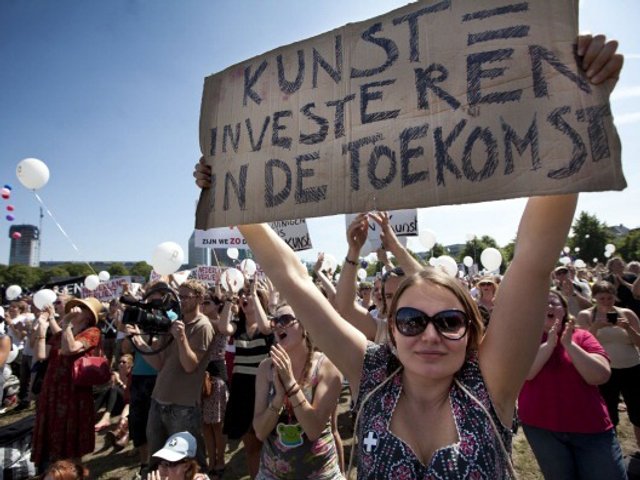Most wealthy art collectors have some sort of relationship with one, if not several, public galleries or museums. Indeed, in the 19th century strong relationships between museums and collectors were taken for granted, with collectors donating works and endowing galleries. But recently this has changed, raising questions about the kind of connections that are appropriate between private collectors and public museums.
As the director of the Museum of Contemporary Art in Leipzig (GfZK), a contemporary space which receives some public funding, I find what is often described as the “undue” influence of collectors and dealers is less of a threat than the noticeable tendency for these parties to lose interest in public institutions. If a director feels the influence of a collector or dealer in a particular proposal is too great, then he or she should simply say “no”. The real problem is that private collectors no longer feel the need to put pressure on museums to gain influence over them. They simply build their own exhibition spaces and appoint directors of their choice. This loss of interest is slowly manoeuvring public art institutions out of public visibility and away from social recognition. It is also affecting the concept of museums as a public space in which various social groups articulate, pursue and defend their interests. Private individuals may enter into such debates, but they are not obliged to do so.
In January 2008, we launched a two-year research project on the role of private commitment to art. “Carte Blanche” is an experiment in using public and private resources in art institutions, with the aim of stimulating a public debate on the working conditions of institutions, and creating greater transparency around overt and hidden costs of mounting exhibitions and running these institutions. Economic and commercial questions will be raised in relation to art, art institutions, the art market, and the politics of visibility—the power relationships that are transparent and obvious, and those that aren’t. We are also interested in how such an interaction between the private and the public sector might look, and what the consequences of such forms of cooperation would be for the development of art and its institutions.
To this end we have invited four businesses—an IT company, Alpha 2000; a publishing group, Leipziger Verlags; an energy company, VNG Verbundnetz Gas; and Sachsen Bank—and two art dealers, Dogenhaus and Eigen + Art, to demonstrate their approach and commitment to art throughout this year and next. The same invitation has been made to four sets of collectors—Arend Oetker and his wife Brigitte; Leon Janucek; Doris and Klaus Schmidt; and Vivian and Horst Schmitter—as well as an artists’ patrons group.
Each of these businesses or individual collectors has a relationship with art, with Leipzig and/or with this museum, but their activities spread beyond the local. The invited participants are given “carte blanche”, to choose and present works from their collections as they wish. The museum’s infrastructure is made available to them, and in return they pay all the costs of their project. GfZK provided an introduction to the issues under scrutiny in its opening exhibition (“Friendly Enemies”, January-March, 2008); we prepared the conceptual framework and are communicating the project’s development as well as holding a series of accompanying debates and publishing a book after its completion.
Not all have wanted to show their collections. Two—Leon Janucek and the Friends Circle of Hans Brosch—have decided to promote one artist only, Dieter Finke and Brosch respectively. The collectors who will present parts of their collection—the Oetkers and the Schmidts—want to initiate a debate about the responsibility of the collector and their relationship to the art market. One of the two commercial galleries, Eigen + Art, is going to exhibit the strategic decisions it makes as part of its participation at art fairs. The businesses involved in the project are either promoting their initiatives (such as awards for younger artists), their collection and/or the way they use the collection.
I still think museums can be partners with the private sector. The “Carte Blanche” project positions curators and collectors in relation to one another. What happens if one of our collaborators proposes anything we find ethically problematic? We will try to convince them not to do whatever they are planning; we will discuss the consequences for us and for them. If they still insist, we will accept the proposal, but will immediately start a public debate. In other words we are challenging our partners and they are challenging us. Art institutions shouldn’t slip into defensive roles. I prefer a more proactive approach. If those of us in positions of leadership don’t take risks, our institutions will lose credibility and relevance. The public potential of our institutions is vitally important and our programme will go some way to revealing where the future may lie.
The writer is director of the Galerie für Zeitgenössische Kunst, Leipzig
Originally appeared in The Art Newspaper as ‘“What is often described as the ‘undue’ influence of collectors and dealers is less of a threat than the noticeable tendency for these parties to lose interest in public institutions”


